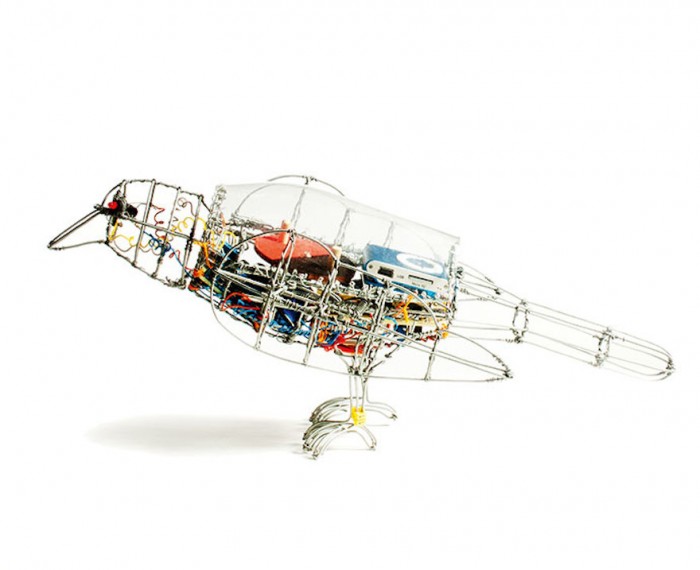Wire art can be found at almost any intersection on South African roads. Young children make wire cars as toys and artists make wire ornaments to sell. And now artist Ralph Borland has brought a new look to this form of livelihood.
African Robots, inspired by South Africa and Zimbabwe’s street wire art, is a project to create interactive electronic street art. It aims to be a bridge between culture and technology in street art. The project plays on the viral nature of how designs are shared amongst street wire artists in South Africa and Zimbabwe.
The robot takes the form of a starling, a common urban bird in Cape Town, South Africa. Borland uses old cellphone parts to make the electronics that the robots rely on. His first prototype, Starling 1.0, exhibited at Design Indaba 2014 as part of ThingKing’s Maker Library Network stand and travelled to the UK with the same company. It ran on a Nokia phone battery and incorporated a sound synthesiser whose pitch depended on the amount of light exposure it got. It also had glowing LED eyes and head and wing movement from a hacked motor and handmade gear.
The third and latest version, Starling 1.2, was unveiled last year in Cape Town. This version derives its sound from a hacked bird toy and has a Scotch yoke, “a mechanism that transfers the rotary movement of the motor to drive the wings”, Borland tells Visi magazine.
Although this is an art project for Borland, it’s also a social development project that intends to empower street artists through expanding their knowledge and skills.







